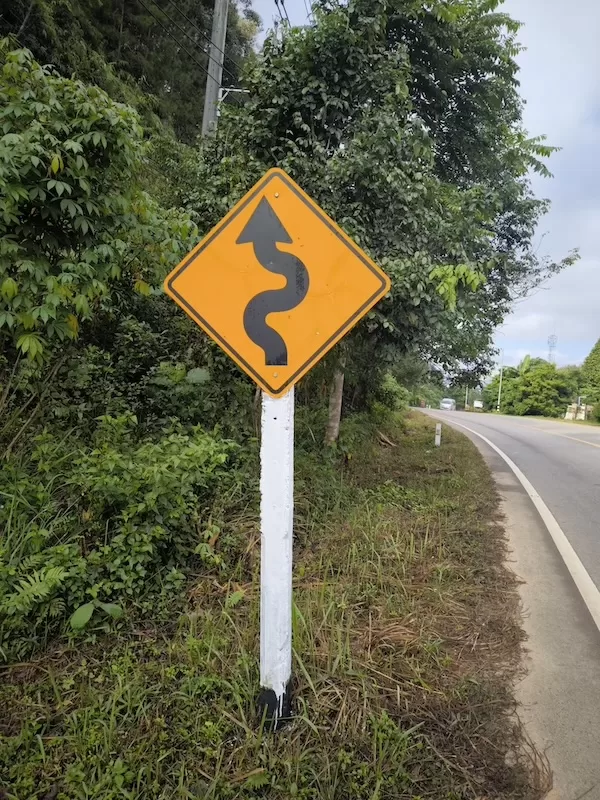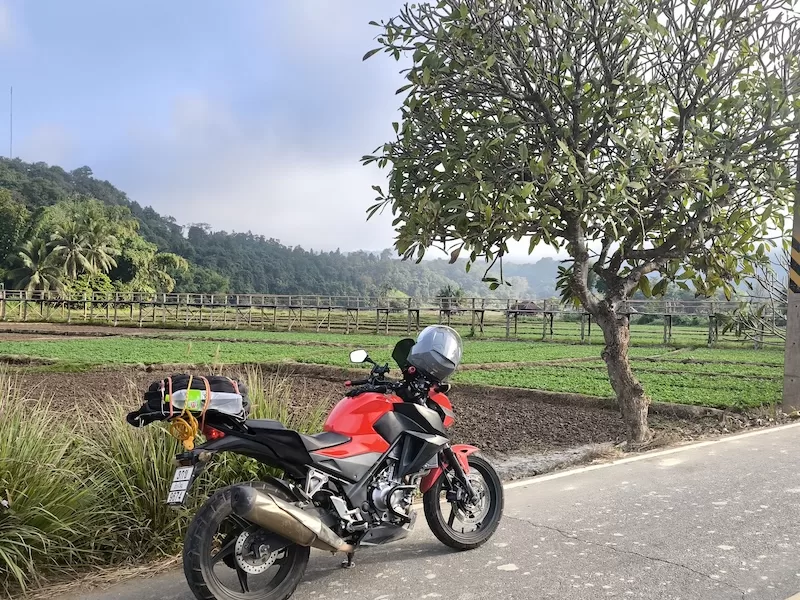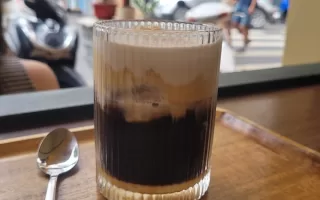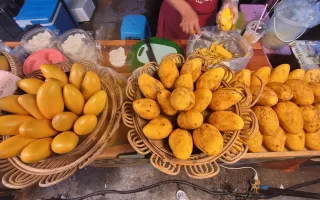Introduction:
After (almost) four months of traveling, during which Saar and I walked (and also flew, drove, and rode) hand in hand, I found myself alone.
Wait, wait, don’t let that sound like something negative. I chose to stay in our rented apartment in Chiang Mai while Saar set off on a three-day motorbike trip to do the famous Mae Hong Son Loop.
In this post, you can read about Saar’s journey.
The Mae Hong Son Loop refers to a route that starts and ends in Chiang Mai and passes through the Mae Hong Son province.
Its total length ranges between 600 and 1,000 kilometers, depending on which sites you choose to visit.


How many days should you dedicate to the loop?
That’s up to you. The minimum is 3 nights. But keep in mind that if you only dedicate 3 nights, you won’t really get to experience the north, you’ll just pass through places and won’t enjoy each and every place.
Can you do the loop on a scooter?
Yes, you can do it on a scooter, but be aware that the road is long, very winding, and steep, with lots of climbs and descents that require braking and speed control.
If you’re riding solo, a 160cc scooter will do just fine.
If you’re riding with a passenger, consider renting a larger scooter, 250–350cc.
If you prefer a “real” motorcycle and have experience riding manual bikes, a 150–300cc bike will suit you. There’s no need for a heavier (and more expensive) motorcycle.
Rental prices for appropriate scooters start at 400 baht per day for a decent 160cc scooter and can go up to 1,500-1,800 baht per day for a well-maintained 300-400cc motorcycle.
Expect an average speed of 50-60 km/h for much of the route (often much slower).
Suggested itinerary:
Day 1:
Leave Chiang Mai and ride to Doi Inthanon, the highest mountain in Thailand. There you’ll find a beautiful two-hour hiking trail, lovely pagodas, and stunning views.
From Doi Inthanon, continue to Mae Sariang and spend the night there.
Day 2:
Ride to the Chinese village of Ban Rak Thai. The mountain ride is challenging, the roads are narrow and winding but the scenery is breathtaking.
Explore the village, see the lake and rice fields, and find a hotel in the area.


Day 3:
Leave early for Tham Lod Cave, about a two-hour ride (depending on where you slept).
At the cave, you’ll need to pay 200 baht per person in a group of three, and a local guide will take you on a one to 1.5-hour tour that includes two walk-through caves and a short bamboo raft ride to the third cave.

There are a few small restaurants and restrooms at the entrance to the site. We chose to have lunch at a restaurant we found at the entrance to the village.
From Tham Lod, continue toward Pai.
Pai is a small town surrounded by nature and amazing views. In a 3-night trip, you’ll dedicate one night to it.
In Pai, you’ll find great restaurants, food stalls that open every evening on Walking Street, and several nearby attractions: the bamboo bridge, Pai Canyon, hot springs, and the White Buddha.
Day 4:
Head back to Chiang Mai, this is the fourth day of the trip.
The ride from Pai to Chiang Mai takes about 3 hours and covers 130 km, mostly along winding roads (762 curves, to be exact!).

On the way, you can stop at Mok Fa Waterfall.
If you’re pressed for time, skip it and head instead to the Sticky Waterfalls, about an hour from Chiang Mai.
At the Sticky Waterfalls, a free attraction for all ages, you can climb the white rocks barefoot, thanks to a special mineral coating that prevents slipping.
A few words about safety:
If you don’t have a license, don’t even think about doing the loop.
If you don’t have riding experience, same.
Helmets and safety gear: In most rental places, the helmets are subpar and you’ll have a hard time finding one that would actually protect you in a crash.
I brought my own helmet to Thailand (along with a riding jacket and protective gear).
If you know that long rides are something you enjoy on your trip, bring your own gear or even buy a helmet that fits you properly here.
Thailand is one of the leading countries in road accident injuries! don’t become a part of the statistic.
The loop is hard, demanding, and tiring. Ride slowly, stop to rest and refresh, and most importantly, enjoy the journey.
Rode, filmed, and documented: Saar 😊



